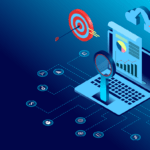Internet of Things Introduction
In the ever-expanding digital world, the Internet of Things (IoT) shines as a beacon of innovation, transforming everyday objects into smart, interconnected devices. From smart homes and wearables to industrial sensors and smart cities, IoT is reshaping our lives, promising unmatched efficiency, convenience, and insights. Yet, with great potential comes significant risk, especially in terms of security. This article explores the real value of IoT beyond the hype and examines the security challenges it presents, offering insights for both consumers and businesses.
Unveiling the Potential of Internet of Things
At its heart, Internet of Things (IOT) refers to a network of physical objects (“things”) embedded with sensors, software, and other technologies that connect and exchange data with other devices and systems over the internet. The potential of IoT spans several dimensions, including:
Enhanced Efficiency and Productivity
Internet of Things devices automate and streamline tasks, from real-time inventory management to optimising energy use in smart buildings. This enhances efficiency and productivity across various sectors.
For example, in agriculture, IoT-enabled devices can monitor soil moisture levels and weather conditions, allowing farmers to make data-driven decisions about irrigation and crop management. In manufacturing, IoT sensors can track equipment performance and predict maintenance needs, reducing downtime and increasing overall efficiency.
Innovative Services and Experiences
Internet of Things enables the creation of new services and experiences. For instance, smart homes provide convenience and peace of mind through remotely controlled security systems and appliances. Similarly, wearables offer personalised health monitoring, opening new possibilities in healthcare.
Imagine waking up to a smart alarm that adjusts based on your sleep cycle, having your coffee brewed automatically, and your home temperature set just right before you even get out of bed. Wearable devices can track your daily activity, heart rate, and even detect potential health issues, sending alerts to your healthcare provider if necessary.
Data-Driven Insights
The data generated by Internet of Things devices offers valuable insights that can drive decision-making and innovation. For businesses, this means a better understanding of customer behavior, optimised operations, and predictive market trends.
Retailers can use IoT data to track customer movements within a store, optimising product placement and inventory management. Cities can analyse data from IoT sensors to improve traffic flow, reduce energy consumption, and enhance public safety.
Navigating the Security Terrain
While IoT promises a future of interconnected convenience, it also introduces significant security challenges. These concerns arise from the increased attack surface IoT devices present and the sensitivity of the data they handle.
Vulnerability to Cyber Attacks
Internet of Things devices, often designed with convenience in mind, may lack robust security features, making them vulnerable to cyber attacks. These vulnerabilities can be exploited to gain unauthorised access, steal sensitive data, or launch attacks on other parts of the network.
A compromised smart thermostat, for example, could provide an entry point for hackers to access other devices on the same network. Similarly, unsecured IoT devices can be used in distributed denial-of-service (DDoS) attacks, overwhelming systems with traffic and causing widespread disruptions.
Privacy Concerns
The vast amount of personal data collected by IoT devices raises significant privacy concerns. Without proper safeguards, this data can be misused, leading to privacy breaches and identity theft.
Smart home devices can collect data on your daily routines, preferences, and even conversations. If this information falls into the wrong hands, it could be used for malicious purposes, such as burglary or unauthorised surveillance.
Challenges in Management and Updates
The decentralised and diverse nature of IoT devices makes them difficult to manage and update. Ensuring that each device is secure and up-to-date is a daunting task for both individuals and organisations.
Many IoT devices are produced by different manufacturers with varying standards of security. Coordinating updates and patches across a multitude of devices can be complex, often leading to delayed or neglected security updates.
Building a Secure IoT Ecosystem
Addressing IoT’s security challenges is essential for realising its full potential. This involves concerted efforts from manufacturers, consumers, and policymakers.
Emphasising Security by Design
Manufacturers must prioritise security in the design phase of IoT devices, incorporating features like strong encryption and secure authentication methods.
By embedding security features from the outset, manufacturers can reduce the risk of vulnerabilities and ensure that devices are resilient against cyber attacks. Regular security audits and adherence to industry best practices are also crucial.
Promoting Awareness and Best Practices
Consumers and businesses should be educated about the importance of security practices, such as changing default passwords, regularly updating firmware, and securing their networks.
Simple steps like setting strong, unique passwords for each device and enabling two-factor authentication can significantly enhance security. Regularly updating firmware ensures that devices have the latest security patches and protections.
Advocating for Standards and Regulations
The development of industry standards and regulations can ensure a baseline level of security across IoT devices, promoting a safer ecosystem.
Policymakers can play a key role by enacting regulations that require manufacturers to implement minimum security standards. Industry-wide certifications and compliance programs can also help establish trust and accountability.
Conclusion
The Internet of Things holds the promise of a more connected and efficient world, offering benefits across personal, societal, and economic spheres. However, realising this promise requires navigating the complex landscape of security challenges. By fostering collaboration among stakeholders and prioritising security and privacy, we can unlock the full potential of IoT, ensuring that it delivers value far beyond the initial hype.
Further Reading and Resources














